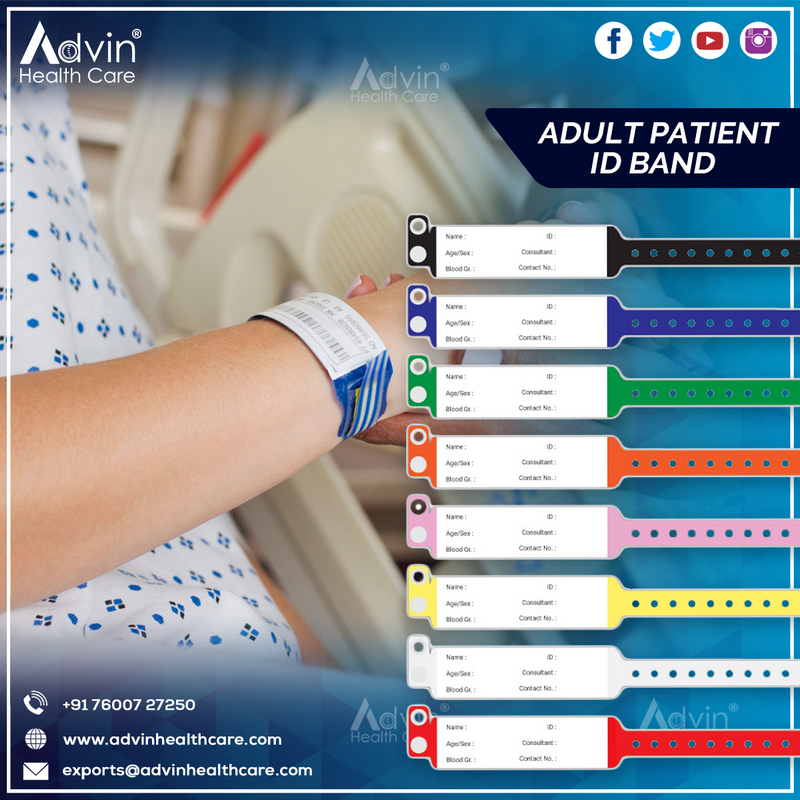Understanding the Advanced Improvements Behind the Patient Identification Band
Understanding the Advanced Improvements Behind the Patient Identification Band
Blog Article
Discovering the Different Kinds Of Patient Identification Band Made Use Of in Clinical Facilities
In the intricate globe of medical care, the critical function of Patient Identification bands usually goes unnoticed. These bands, varying from basic paper wristbands to innovative RFID bands, form the foundation of Patient safety and security protocols, guaranteeing precision in Patient Identification. Yet, the large variety of these bands, each with its one-of-a-kind advantages and limitations, is often ignored. As we navigate with this subject, one may gain understanding right into the refined intricacies and vital value of such bands in medical facilities.
Understanding the Importance of Patient Identification Bands
While they might appear like plain devices, Patient Identification bands play a vital function in medical centers. These bands function as a crucial device for verifying Patient identity, preventing clinical mistakes associated with misidentification. The bands normally display vital information such as the Patient's name, age, blood type, and any type of recognized allergies. They enable medical care experts to swiftly access this critical details, thereby promoting prompt and exact clinical therapy. Patient Identification bands likewise aid in improving administrative tasks, guaranteeing accurate record-keeping and payment. In spite of their simplicity, these bands personify the principle of Patient safety, a cornerstone of quality healthcare. Without them, the threat of clinical errors, and as a result, Patient damage, may considerably increase.
Conventional Paper Wristbands: Their Use and Limitations
Traditional paper wristbands have actually been a staple in Patient Identification across numerous medical facilities. While their use prevails, they nurture certain constraints that may affect their effectiveness in Patient management. This section will focus on the extent of their application and the fundamental disadvantages associated with their usage.
Paper Wristbands: Usage Scope
In the world of Patient Identification, paper wristbands have actually long held an important duty. These bands are typically utilized in outpatient setups, where the Patient's keep is temporary. Despite improvements in modern technology, the simple paper wristband continues to be a cost-efficient and dependable service for Patient Identification in various healthcare scenarios.
Limitations of Paper Wristbands
In spite of their widespread use, paper wristbands are not without their disadvantages. In enhancement, paper wristbands commonly lack the technological abilities of more modern-day alternatives, such as barcoding or RFID chips, restricting their performance to just showing created info. Paper wristbands can create discomfort or skin irritability to some clients, especially when worn for extended durations.
Barcoded Wristbands: Innovations in Patient Identification
While Patient Identification has actually long been a crucial facet of healthcare, the arrival of barcoded wristbands signifies a significant leap onward. These bands leverage the simpleness of barcoding modern technology, enabling for Patient details to be rapidly checked and accessed. They enhance the speed and precision of Patient Identification, decreasing the threat of medical errors connected to misidentification. Barcoded wristbands are economical, easy to produce, and eliminate handwriting mistakes usual with hand-operated systems. Nevertheless, they are not without constraints. While they use improvements over traditional bands, the barcode can become smudged or used, rendering it unreadable. In spite of this, barcoded wristbands stay an essential tool in contemporary health care setups, signifying the intersection of innovation and Patient care.
Radio Frequency Identification (RFID) Bands: an Action Towards Futuristic Health Care
The evolution of Patient Identification bands has actually produced the development of Superhigh frequency Identification (RFID) Bands (patient identification band). These innovative devices existing vital benefits for medical care facilities, providing a more reliable and technically advanced methods of Patient Identification. The implementation of RFID in medical care is a substantial step in the direction of an extra advanced technique to Patient management and safety and security
Comprehending RFID Bands

RFID Bands: Trick Advantages
Primarily, these bands enhance Patient safety and security by providing precise, immediate Identification, thereby reducing medical errors. RFID bands can save a substantial amount of Patient data, consisting of clinical background and allergies, allowing individualized care. In general, RFID bands represent a considerable innovation in Patient Identification technology, benefiting both clients and healthcare suppliers.
Applying RFID in Medical Care
As we enter a technologically advanced age, the application of RFID bands in health care ends up being increasingly vital. These bands offer a seamless way to track and identify clients, ensuring their safety and improving performance in therapy procedures. RFID bands use many advantages over standard Identification techniques. They can store a large amount of information, consisting of the Patient's case history and treatment strategies, which can be conveniently accessed by medical care service providers. This data aids medical professionals make informed decisions concerning the Patient's therapy plan. RFID bands minimize medical mistakes by supplying accurate Patient Identification, which is critical in stopping misdiagnosis or wrong medicine administration. Hence, the application of RFID bands is a considerable action in the direction of improving Patient security and healthcare shipment.

Color-Coded Wristbands: Aiding in Quick and Accurate Medical Diagnosis
In the dynamic environment of a clinical center, color-coded wristbands have actually become important tools for swift and precise Identification of a person's clinical problem. These wristbands, put on by people, bring particular colors that represent different medical problems or conditions. As an example, red find here can show allergy threats, while yellow may represent a fall threat. This system is developed to offer prompt visual signs to health care providers, improving Patient safety and security and care high quality. In emergency situation circumstances, using these wristbands enables quick decision-making. However, the performance of color-coded wristbands depends upon the harmony of color analysis across medical care organizations, requiring typical requirements for consistent application.
Methods for Reliable Implementation and Administration of Patient ID Bands
Attaining optimum use Patient Identification bands demands a well-structured strategy for their implementation and management. The initial step includes training all health and wellness employees on the relevance of correctly applying and reading these bands. Medical facilities need to systematize the use of ID bands throughout all departments, guaranteeing uniformity and reducing disparities. Normal audits ought to be carried out to verify adherence to policies and to rectify any inconsistencies. Patient education and learning is likewise vital; individuals have to recognize the objective of the bands and the requirement for their constant wear. patient identification band. Lastly, it's necessary to have a back-up strategy in position, such as barcode scanning over at this website or biometrics, to guarantee that Patient Identification is never compromised.
Verdict
Patient Identification bands are vital in clinical centers to ensure security and precision. Effective implementation and administration of these bands can dramatically reduce medical errors, increase effectiveness, and boost total Patient treatment.
These bands, varying from easy paper wristbands to sophisticated RFID bands, create the foundation of Patient safety and security methods, guaranteeing precision in Patient Identification.The development of Patient Identification bands has brought regarding the development of Radio Frequency Identification (RFID) Bands. In general, RFID bands stand for a considerable innovation in Patient Identification modern technology, profiting both people and healthcare providers.
RFID bands decrease medical errors by providing accurate Patient Identification, which is vital in stopping misdiagnosis or incorrect medication administration. Patient education is also crucial; patients must recognize the objective of the bands and the requirement for their continuous wear.
Report this page